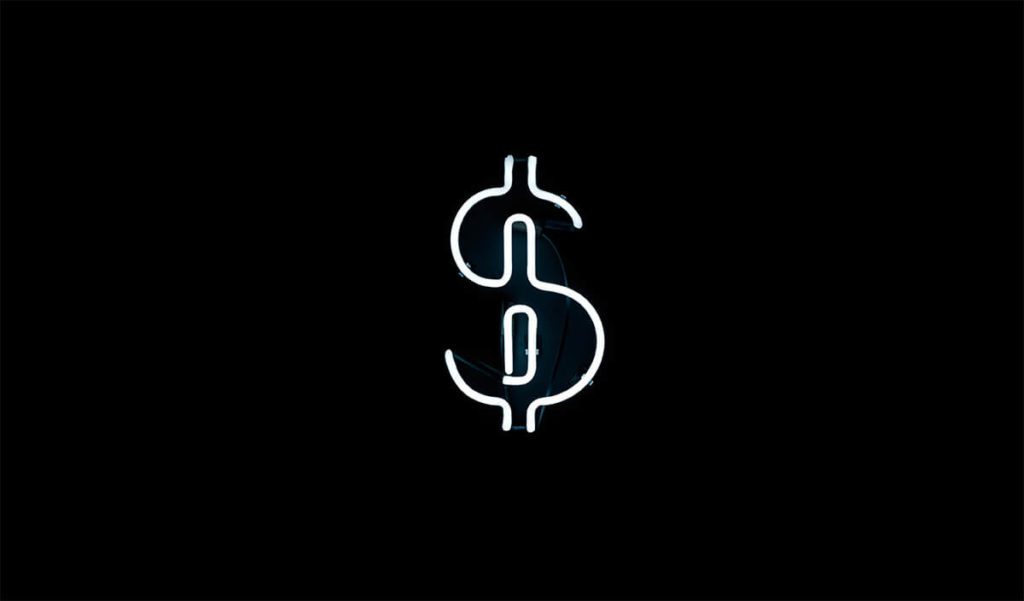Sign on glass technology has taken the freight and transport process to an all new level of transparency and efficiency. But why, exactly, has it trumped the previous methods? What is wrong with the reliable old ink and paper method, or even the following wave of specialised proof of delivery tools? They also worked, didn’t they? It begs the question, is it really worth adopting sign on glass technology? Well, the answer is a resounding YES! This article explains why, and how sign on glass technology evolved into today’s ultimate proof of delivery tool for transport and warehouse software.
The Evolution of Sign on Glass Technology
There is two key steps which underpin the success of freight and transport operations. They’re so critical, that failure of either would result in failure of successful freight….
They are:
- Pick up, and;
- Delivery!
Although obvious, it is the perfect place to start the discussion about the importance of sign on glass technology.
To explain how sign on glass technology has revolutionised the freight management industry, let’s first look at where it fits into the freight management picture.
Without Proof of Delivery, Was it Even Delivered?
Freight services have been around for hundreds, maybe thousands of years! Freight providers have been running into the same issue the whole time; a reliable proof of delivery system.
The Importance of Proof of Delivery
Without it, the assurance and consistency that freight services are meant to provide can fall away. Hence why it is still such as critical part of the process. Only these days, it’s done a whole lot differently. Instead of old Heronemus carving a symbol into a piece of wood, squishing his wax stamp onto a piece of papyrus paper, or branding his freshly delivered heard of goats, these days it’s done by signature.
For the past few centuries it’s been as simple as the receiver scribing their signature on a piece of paper, confirming everything was received as stated on the invoice, and Bob’s your Uncle, the jobs done! But, what if the paper is lost, burnt, wet, stolen…..or any other misfortunate turn of events? What happens to that hard copy proof of delivery?? Quite simply, for all intents and purposes, it didn’t happen! It becomes one person’s word against another’s.
A Smarter Way to Prove Delivery

For a number of years now there have been digital tools available to handle the proof of delivery signature in a safer way than pen on paper. These are called signature reproduction tools. In the freight world, they are usually small handheld devices with a little pen like tool, used to sign your life away on a little (often unresponsive) screen.
They solved the paper based issue, but created another. These specialised signature reproduction tools can still be lost, stolen, drowned and more. Staff delivering the goods are then left dead in the water, and may have to revert to the old paper based method upon delivery anyway.
So, following the world’s upward technological trend, this method too has been revolutionised!
The Sign On Glass Technology Revolution
Just like the freight industry’s proof of delivery methods, this article has arrived at its most contemporary point!
What Exactly is Sign in Glass Technology?
Sign on glass technology is a new way to secure proof of delivery, without the risks associated with the old ways.
It completely removes the old risks, and makes proof of delivery a more simple, secure process by:
- removing all paper requirements, relying on signature reproduction technology; and
- allowing for integration with a range of smart device, as long as they have a touch screen and the right transport and warehouse system installed.
It can even be done with a finger!
No more downtime due to signature pens stuck down the side of your vehicle’s seat, or suffering screens with the responsiveness of a stone! It simply integrates proof of delivery processes with today’s widespread use of smart devices.
Easy, Flexible and Consistent Proof of Delivery
As a result, sign on glass technology is an easier, more fail safe way of reproducing proof of delivery. Although it’s only a few years old, it has quickly become a convenience that customers expect.
What Hardware and Software is Involved with Sign on Glass Technology?

All that is required is a smart device and the right Transport Software.
These days, cloud computing services provide the ability to acquire and use the right software, without even needing to store it on your IT network or the smart device itself.
Software can be hosted online by logistics software companies, which can then be accessed and used through a subscription style method. This also means that updates and maintenance of the software itself isn’t eating into your resources.
What you have, is a constantly improving software based tool, available across your fleet and interchangeable across smart devices. Proof of delivery becomes available to any staff member, at any time, with any of your businesses smart devices!
For the most integrated solution, sign on glass technology can be provided as part of a broader freight management software package, making for a consistent and seamless way to manage freight, end to end, across the entire business.
If you’re not already sold, chek out the seven key benefits you get with sign on glass technology.
The 7 Benefits of Sign on Glass Technology
These benefits include:
- Speed of updates
- Transparency
- Live freight tracking
- Issue moderation
- Cost effectiveness
- System integration; and
- Safety.
1. Speed of Updates
Previously, with specialised signature reproduction tools and IT software, updates could be a long, complex process, causing potential downtime to business.
This is because they were loaded directly onto your IT network, and had to be manually updated by IT specialists, on site.
Using sign on glass technology through a logistics software vendor, it can happen almost instantly. Most users won’t even know when it’s happening.
The software host should handle updates, upgrades, patches, bug fixes, and the rest, behind the scenes. The only software side you see is a constant responsive and effective signature reproduction tool.
2. Transparency
![]()
Sign on glass software should be connected and available to your entire IT network.
As soon as a signature is secured, it is recorded in a database (which can also be hosted by the provider, depending on your contract), and immediately available for all to see (for all those who need to see it, anyway).
It means instant insights into that key step in the freight process – proof of delivery.
3. Live Freight Tracking
You know the fate of your freight the moment it is received!
Your freight management software can update logistics immediately, and organise things appropriately. This has significant benefits for item level traceability and end to end freight visibility.
4. Issue Moderation
Sign on glass technology addresses a number of issues which plagued the freight industry for…basically ever.
This included things like invoice discrepancies, false missing goods claims and staff misconduct (i.e. theft).
These issues are kept in line by using sign on glass technology. It is not just the technology itself which mitigates the issues. It is also the perception that sign on glass technology closes the gap for misconduct by making everything visible and transparent, thus reducing the risks dishonest people are willing to take.
5. Cost Effectiveness

By using a hosted software service to provide sign on glass technology, you may have the option of paying a subscription fee, instead of outright software purchase (and often specialised hardware purchase to go with that).
With a subscription based approach, you pay a price which reflects your business needs, and don’t necessarily need specialised hardware that is unique to proof of delivery.
For example, it could be simply used with an Android smart device, which can also perform a huge amount of other business functions.
6. System Integration
As previously mentioned, you can get sign on glass software comes as part of broader freight management system packages.
These options are often the most seamless logistics solution, providing integration, visibility and communication across all freight processes.
All you need is a fleet supported by the right smart devices. The flow on benefit is, tools like Android based smart devices are cheap and feature rich, and offer solutions to a huge range of other freight business needs, not just proof of delivery alone.
7. Safety

The final benefit is the extra safety sign on glass technology provides. For example, it allows for instant tracking of dangerous goods and cargo.
This is acheived by live feedback about the movement of the dangerous goods, meaning less chance of dangerous goods ending up in the wrong hands, or accidently causing accidents in public places.
For example, traffic controllers can be made aware as soon as dangerous goods are delivered, through a live update processes, confirmed by sign on glass results.
What are the Legal Implications of Sign on Glass Technology and E-signatures?

As per usual, governments and legislation often lag behind technological advancements around the world.
Although Australia’s legal system accepts e-signatures as an official way to prove goods were delivered, according to the FindLaw Australia website, e-signatures don’t always clearly prove the identity of the receiver, or their intention to receive the goods. So, to clarify, it does prove delivery, but in court, it may not be taken as 100% proof of the receiver’s identify.
But, law is rarely a watertight affair in the first place, and decisions are made on a case by case basis.
In short, if misconduct does occur:
- your sign on glass e-signature is still considered proof of delivery; and
- it is very unlikely that an e-signature will be the only evidence available or required.
If an investigation were to become that serious that it warrants a court case, there will most likely be a number of other sources providing evidence of misconduct.
Plus, the legislative world always catches up eventually, and it is better to be up-to-speed when it does, rather than playing catch up with competitors.
Conclusions
Proof of delivery has well and truly moved into the 22nd century with sign on glass technology.
Not only does it revolutionise the way proof of delivery is dealt with, it provides opportunities to manage and grow your business through the many benefits it provides:
- Speed of updates
- Transparency
- Live freight tracking
- Issue moderation
- Cost effectiveness
- System integration; and
- Safety.
If you have any further enquiries about how sign on glass technologies can help your business, or which software to go for, get in touch with the experts at Infocomm.
Frequently Asked Questions
What happens if the delivery staff lose their sign on glass smart device hardware?
One of the huge benefits of sign on glass technology is the ease at which it can be loaded and used across a range of smart devices.
Ideally, due to the cheap cost of smart devices these days, staff will have back ups and will suffer no down time, and importantly will never be forced to use a paper solution.
All the data stored on the device is kept in a centralised network location, and will not be lost with a device.
Will a sign on glass signature provide legal proof of delivery?
Yes. The issue with this kind of new technology is not whether it demonstrates the goods were delivered, but is about difficulties using the e-signature to prove the identity of the receiver, and their intention to receive the goods.
This is an issue that will most likely be resolved by legislation in the future, as e-signatures become a bigger part of the way every business operates.

